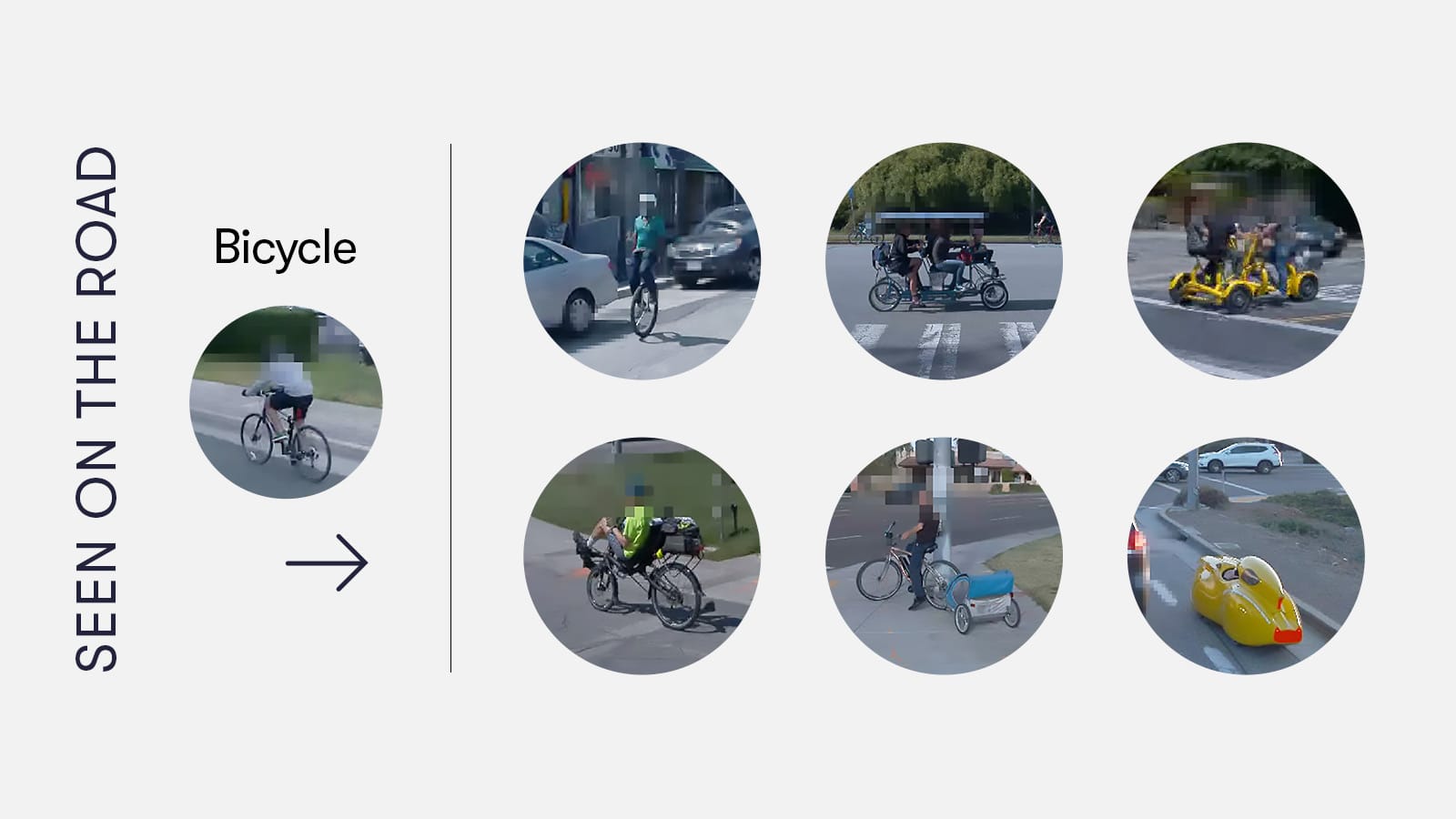June 14, 2021
Beyond the bike lane: How we've built the Waymo Driver to share the road with cyclists

Cyclists in particular pose a number of unique considerations for autonomous driving technology. They can be walking alongside their bike on a sidewalk one moment, then zooming down the road at 30 miles per hour the next. On public roads, cyclists show a greater variety of behaviors than other vehicles. They can be found between lanes, going against traffic, and walking in streets. As riders and drivers know, bicycles come in all shapes and sizes, and the Waymo Driver, what we call our autonomous driving technology, needs to be able to recognize everything from a tandem bike to a recumbent bike, a velomobile to a tricycle - and safely share the road with all of them.
Going above and beyond to safely operate around vulnerable road usersHere at Waymo, one of our most active employee social groups is Cyclists at Waymo, made up of people on our team who bike to work every day they’re in the office or just cycle for fun. Various product and engineering teams collaborate with fellow Waymo Cyclists to conduct focus-group sessions and get feedback on their riding experience to improve the Waymo Driver’s behavior. In order to learn how we can best share the road with cyclists, we also engage with both the California Bicycle Coalition and Silicon Valley Bicycle Coalition, along with various other cycling organizations, to hear from as many sources as possible. By listening to the interests and concerns of all these groups internally and externally we’re able to adjust our testing and validation procedures to make them as effective as possible, even before we drive on public streets.
Our structured and simulation testing are important to help us prepare for certain situations in a safe and controlled environment. At our closed-course testing facilities, we can stage complex and rare scenarios in a safe environment and test them over and over again, changing different variables. Our team creates these testing scenarios in a variety of ways. We use national databases to identify the most common traffic accident scenarios, recreate situations our technology sees while testing on public roads, design scenarios to test new driving functions developed by our engineers, and incorporate suggestions from team members based on their driving and bike riding experiences.
With simulation, we can also verify our system's performance on past events. Take this real world example: while driving in Phoenix, there was a cyclist riding their bicycle on a sidewalk when they fell into the road. While the specialists behind the wheel disengaged, bringing our vehicle to a safe stop, when we re-ran the scenario in simulation we were able to confirm that, if the specialist had not disengaged, the Waymo Driver would have safely responded to the fallen cyclist, too. Simulation also allowed us to see that the Waymo Driver preemptively nudged over to give the cyclist more room, even though they were on the sidewalk, in case something like this happened.
Creating a comfortable experience for Waymo One riders and other road users
Safety is our top priority. Even if our interactions are physically safe, it's important that other road users feel confident and comfortable around our technology too.
Some of the most common concerns we hear from vulnerable road users relate to the challenges they face in ensuring that a human driver has seen them and correctly anticipating how they will respond. Even if the vulnerable road user is seen by the human driver, every person has a unique driving style. For cyclists, this means that some may yield while another may cut the cyclist off, and the cyclist has little way of knowing which type of driver they have encountered until the driver yields or cuts them off. The Waymo Driver addresses both of these challenges. First, our vehicles are equipped with a combination of sensors designed to see 360 degrees around the vehicle, day and night, and identify and respond to objects up to three football fields away. Second, because vehicles driven by the Waymo Driver all share the same behavior - safe, courteous, reliable - we remove a lot of the uncertainty for those around us.
We work to ensure we are creating a comfortable and polite experience for all through understandable interactions that express our intentions. This is harder to do without anybody behind the wheel because, unlike a human driver, we can't nod, make eye contact, wave, or gesture. Our Rider Experience, Industrial Design, and Research teams create subtle cues we can work into the Waymo Driver’s behaviors. We also make cyclists feel more comfortable by giving them a wider berth when possible/appropriate while we pass, or politely providing them the time and space to cross a crosswalk, reassuring that they don't need to rush.
Enabling a safe pickup and drop off experience
Anyone who has cycled on city streets is familiar with the concern of “dooring”, when a vehicle door is opened into the path of a bicyclist, resulting in a collision. According to research conducted by the San Francisco Municipal Transportation Agency, between 2012 and 2015 there were 203 collisions due to dooring in San Francisco alone. We are continuously refining how the Waymo Driver manages curbs, including picking up and dropping off our riders, while accounting for nearby bike lanes.










